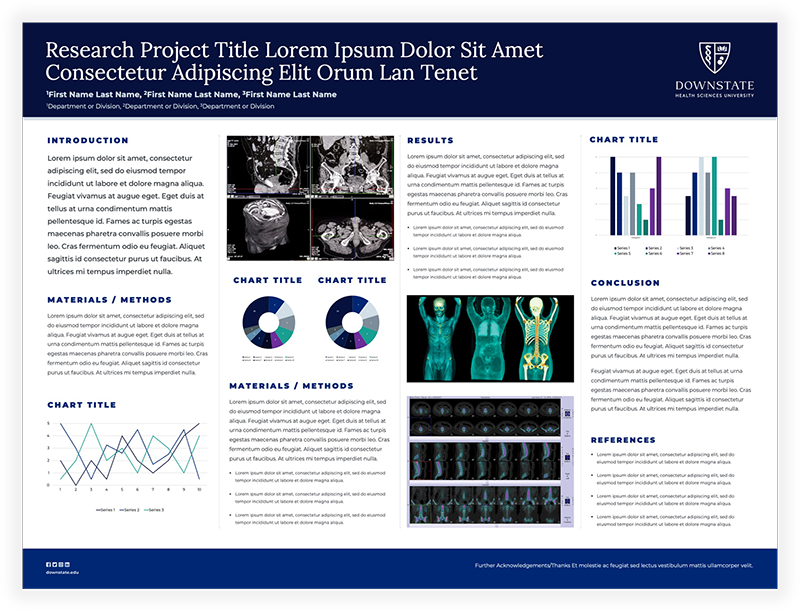Research Posters
Attending a poster session? Request a poster print or get started with our official SUNY Downstate poster templates below.

Request a Research Poster Print
Have a research poster you've designed ready to print? Use the button below to request a poster print with New Media Services.
Pricing, production times, campus pickup location and other information are included in the form below.
Official SUNY Downstate Powerpoint Templates
Use the link below to download our currently available research poster templates.
Templates can be customized to certain page sizes as long as the SUNY Downstate logo
is not distorted.
Current sizes included are:
48" x 36" (Standard Poster Size)
44" x 44" (1:1 ratio)
General Advice
- The design should be visually appealing, utilizing the capabilities of color, graphics and typography to communicate your poster.
- A clear, simple, uncluttered arrangement is the most attractive and the easiest to read.
- Color should be used sparingly, to provide contrast.
- Illustrations should be simple and eye-catching, with unnecessary detail left out.
- If possible, avoid long numerical tables. Convert complex tables to graphs or charts. Use photographs or colorful graphs wherever possible.
- Photos should be enlarged enough to show relevant details.
- Patient confidentiality must be protected. No names should appear in illustrations.
- Headings of more than six words should be in upper and lower case, not all capitals.
- Use bold characters to stress your point.
- When laying out your poster leave "breathing space" around the text. This increases legibility.
- Use the Downstate brand fonts of Lora (for headings) and Montserrat (for body copy) when possible. Those fonts are available to download here.
- Keep body text left aligned.
- Columns should not vary in width.